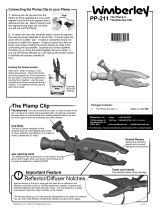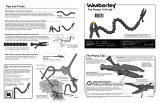
Contents page I
ELC X-Series-V1.5-06.18-GB subject to technical alterations
Contents
1 Safety ................................................................................................ 1
1.1 Definition of symbols ................................................................................... 1
1.2 Safety advice ................................................................................................ 1
1.3 Correct operation ......................................................................................... 2
1.4 Extended use ................................................................................................ 2
2 Description of functions .................................................................... 3
3 Installation ........................................................................................ 4
3.1 Mounting of casing ....................................................................................... 4
3.1.1 Mounting of single ELC .................................................................................... 4
3.1.2 Mounting in a stack .......................................................................................... 5
3.2 Connection ................................................................................................... 6
3.2.1 Connection overview of ballast types X4 – X8 .................................................. 6
3.2.2 Profile of the cable gasket X4 – X8 ................................................................... 7
3.2.3 Overview power connections X4 – X8 ............................................................... 9
3.2.4 Connection overview of ballast types X12 – X36 .............................................10
3.2.5 Overview profile of the cable gasket X12 – X36 ...............................................10
3.2.6 Overview power connections X12 ....................................................................13
3.2.7 Overview power connections X16 – X36 ..........................................................14
3.2.8 X100: Mains connection ...................................................................................15
3.2.9 X600: Connecting the lamp feeder cable ........................................................16
3.2.10 Overview of control and bus connections ....................................................18
3.2.11 X1 / X2: BUS connections ............................................................................19
3.2.12 X3: BUS T-coupler .......................................................................................20
3.2.13 X805 and X806: Control cables ....................................................................21
3.2.14 X808/X300: Service interface .......................................................................23
3.3 Comments on the safety functions of the ELC ........................................... 25
3.3.1 Safety relay ......................................................................................................25
3.3.2 Initialisation signal ..........................................................................................25
3.4 Configuration ............................................................................................. 26
3.4.1 Setting up the BUS address ............................................................................28
3.4.1.1 PROFIBUS .......................................................................................... 28
3.4.1.2 MODBUS ............................................................................................ 29
3.4.2 Checking the BUS connection and error indication ........................................30
3.4.3 Setting lamp power via BUS ............................................................................31
3.4.4 Extended temperature and power range ........................................................33
3.4.5 To read out ELC serial number and software version ....................................35





















